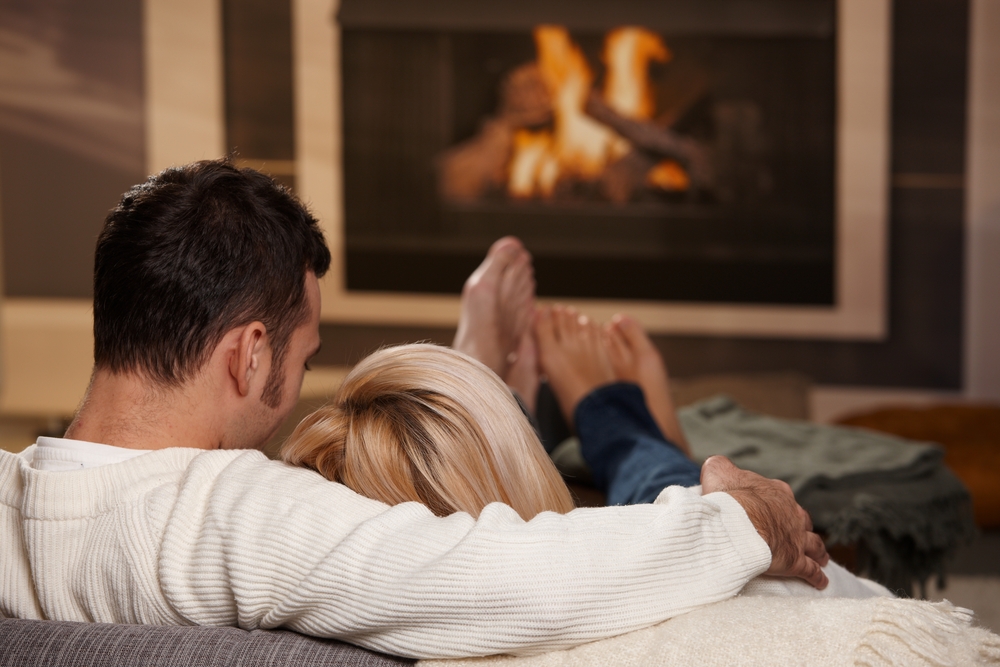Handling the Heat: 7 Big Safety Tips for Residents

A particularly frigid winter blast or even an inefficient furnace may prompt your residents to bring out the space heater or other warming devices. But with that toasty feeling comes a risk to both the resident and landlord, especially if heating devices are left unattended or misused.
A warm blast of direct heat does wonders to take the chill off any home.
In 2011 heating equipment was involved in nearly 54,000 reported U.S. home structure fires, causing $893 million in direct property damage and taking 400 lives while injuring 1,520 others, according to The National Fire Protection Association (NFPA). These are fires started from heating devices – central heating units, portable or fixed heaters, heating stoves, chimneys and water heaters – and are the second-leading cause of home blazes.
It’s unclear of the impact but hidden in these statistics are fires started by using kitchen stovetops or ovens to stay warm. Fire prevention advocates say this is a big no-no, and something that landlords should communicate to residents as temperatures turn chilly and home heating fires become more prevalent.
“Residents should never use their stove or oven for anything other than cooking,” says Ed Wolff, President of Leasing Desk Insurance. “This not only endangers the resident but puts others and the property at high risk.”
An obvious risk to using a stovetop, oven or alternate heating devices is potentially starting a fire because furniture, clothing, towels, bedding and other flammable objects come into contact with the heat source. A napkin that comes into contact with a red-hot burner, for example, could send a home up in flames.
Likewise, using a gas stove to heat a room could be potentially deadly to the resident. Even moderate levels of carbon monoxide poisoning from lighting a gas stove without proper ventilation can cause headaches, dizziness, nausea, and fainting. High doses can be fatal. A St. Louis woman a couple of years ago was fortunate enough to survive carbon monoxide poisoning after using her gas stove for heat.
Alternate heating devices are a leading cause of fire-related deaths
The risk of fire or carbon monoxide poisoning from using kitchen devices is just one when alternate heating sources are used for home heating. NFPA statistics show that more than half of home heating fire deaths three years ago were attributed to placing heating equipment too close to things that can burn.
Alternate heating devices have been used in homes for years and will continue to be a favorite for residents looking for immediate relief from the cold. The devices gained momentum in the late 1970s and early 80s during the energy crisis. Consumers tried to stay warm while keeping home heating costs down by employing wood-burning stoves and space heaters.
Today, these devices and others are commonly used to take off the chill. The American Red Cross says that nearly half of American families use alternative heating sources like fixed or portable space heaters, fireplaces and wood/coal stoves.
But while they can warm a room quickly, space heaters are high-wattage appliances that have the potential to ignite nearby combustible materials, says the Consumer Products Safety Commission. CPSC notes that 74 percent of fire-related deaths are attributed to these devices.
Wolff says owners and managers should educate residents about how to use alternate heating devices safely, especially now. NFPA reports that half of all home heating fires happen from November to January.
Preventing fires by other heat sources is manageable
The American Red Cross offers these tips to help prevent a home fire from starting by an alternate heating source:
- Keep all potential sources of fuel like paper, clothing, bedding or rugs at least three feet away from space heaters, stoves, or fireplaces.
- Portable heaters and fireplaces should never be left unattended. Turn off space heaters and make sure any embers in the fireplace are extinguished before going to bed or leaving home.
- If you must use a space heater, place it on a level, hard and nonflammable surface (such as ceramic tile floor), not on rugs or carpets or near bedding or drapes. Keep children and pets away from space heaters.
- When buying a space heater, look for models that shut off automatically if the heater falls over as another safety measure.
- Never use a cooking range or oven to heat your home.
- Keep the fire in your fireplace by using a glass or metal fire screen large enough to catch sparks and rolling logs.
- Have wood and coal stoves, fireplaces, chimneys, and furnaces professionally inspected and cleaned once a year.
And, says Wolff, don’t forget to routinely check smoke and carbon monoxide alarms.







